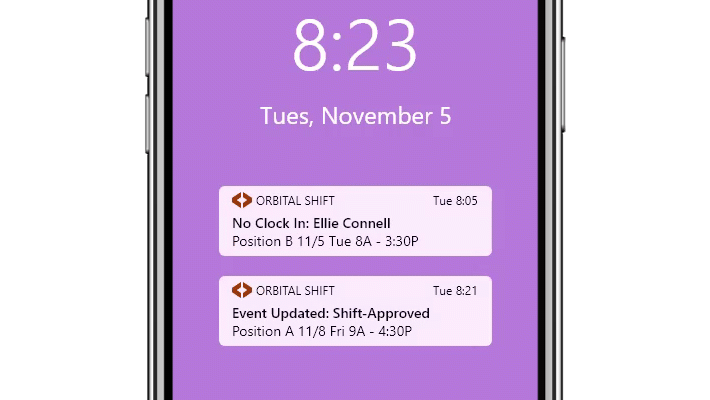One of the most important functions of any human resources department is keeping up with employment law and adjusting office protocols to work within it. Each of the company's employees is a human being who is entitled to all the protections the law provides. Any mistakes in the adding of hours or handling of medical insurance information, for instance, could severely injure an employee.
Since employment law is very personal to your employees, you can be sure if you make a mistake, there will be consequences. When you multiply the potential claims against your company by the number of people you employ, you understand the size of the potential risk.
To minimize your risks, it is a good idea to review all of your policies each year against the backdrop of any changes in the law. Employment law changes regularly, so being aware of the changes is a good first step.

New Laws for Employers Regarding Sick Leave
Although it was signed in 2015, Executive Order 13706 (EO 13706) establishing paid sick leave for federal employees actually goes into effect in 2017. Approximately, 1.15 million workers will get paid sick leave under this rule.

Since about 22% of the American labor force is employed by companies that do business with the federal government, the paid sick leave rule could have a big effect on employees. EO 13706 only applies to new contracts that meet certain specifications detailed in the Final Rule, including:
- Contracts that are governed by the Davis-Bacon Act (DBA)
- Contracts that are governed by McNamara-O'Hara Service Contract Act (SCA)
- Concessions contracts
- Contracts for federal lands or offering services to federal employees
- Sub-contract of any contract that meets qualifies

At first glance, EO 13706 appears to apply to companies that do work for the federal government. However, its reach is broader than that by encompassing concessions contracts, in particular. A company doing business on federal property was granted the right to do so by the federal government through a concessions contract. The business that company does under that contract does not have to pertain to the government at all or federal employees. A company selling food, for example, to tourists on federal land would be subject to the provisions of EO 13706, although their business has nothing to do with the government or federal employees.
By including contracts governed by SCA, EO 13706 covers procurement and non-procurement construction projects. Construction companies doing business under government contracts, whether they are strictly funded by government grants or loans, or whether their construction services are procured by a government entity, are subject to the paid overtime provisions of EO 13706.
There are narrow exclusions to EO 13706, including these types of contracts:
- Contracts to Indian Tribes
- Grants
- Contracts for services exempted under SCA
- Procurement contracts under $2,000 for construction
All employees who perform work for or related to the contract are eligible for paid sick leave. Employees who qualify under the Fair Labor Standards Act (FLSA) overtime exemption are not exempt from the paid sick leave provision of EO 13706. Only employees who work in connection with the contract but spend 20% or less of their time on that work are exempt from EO 13706.
Anyone already earning 56 hours of paid sick leave each year as a result of a collective bargaining agreement is exempt from EO 13706 until that collective bargaining agreement expires. If the collective bargaining agreement extends beyond January 2020, EO 13706 will take affect and cover that employee, anyway.
Contracting agencies are responsible for including a paid sick leave clause in all applicable contracts. The agencies are also charged with holding back funds if an employer does not provide the paid sick leave benefit to his employees. Contracting agencies will forward con-compliance complaints against employers to the Wage and Hour Division.
Contractors keep track of the hours worked on a specific contract and track the paid sick leave earned by each employee. Hours on a job may be estimated as long as the estimation is reasonable. At the end of the pay period, or at the end of the month, whichever comes first, employees must be notified about the sick time they have accrued.
Upon separation, employers are required to pay out the balance of accrued sick leave to the employee. If that employee is hired back within 12 months, his accrued sick time must be reinstated if it was not cashed out to him when he left.

The uses for paid sick leave under EO 13706 are clear and include:
- Seeking diagnosis, preventive care, or treatment from a health care practitioner
- Physical or mental illness or injury
- Obtaining counseling for domestic violence, sexual assault, or stalking
- Caring for a sick family member
- Seeking assistance from a victim services organization
- Helping a family member get help for domestic violence, stalking, or sexual assault
- Taking legal action pertaining to your own or a family members domestic violence, sexual assault or stalking
Sick leave can be used in increments as small as one hour, as long as it is not impossible to leave and return during a shift. Employers can only limit the amount of paid sick leave by the amount an employee has earned. While an employee is out on paid sick leave, he is still paid his regular wages and benefits, as if he were working. An employee does not, however, continue to accrue sick leave while he is on sick leave.
An employee must make an oral or written request for sick leave as early as possible. For planned appointments, a seven-day notice is requested. An employer cannot deny a request to use accrued sick time based on his workforce or workflow. Any denial of request for sick leave must be communicated in writing with a reason.
New Laws for Employers Regarding Overtime
Scheduling and compensating employees for overtime can get complicated if you do not have a good tracking system. In a large organization, overtime pay may apply differently to different types of employees. You may have both hourly and salaried workers cooperating on the same project but being compensated based on different metrics.

Establishing an overtime policy that works company-wide is a challenge. As your company grows and changes, what constitutes overtime work may vary and your compensation package will need to be adjusted. Doing this in a way that is fair and equitable to all employees can be difficult.
The federal government stepped in recently to outline some minimum standards for overtime pay, what constitutes overtime work, and who needs to be compensated for their extra time on a job. In the middle of 2016, the Department of Labor finalized updated regulations concerning overtime. The Final Rule was set to take effect on December 1, 2016.
The primary focus of the Final Rule on overtime was defining who is eligible for overtime pay. Previously, salaried workers were expected to work any number of hours for the same compensation. Hourly workers, on the other hand, were paid for each hour they worked, and when those hours exceeded a regular work week, they were to be paid a higher wage.
The idea of salaried workers not earning overtime pay originally came from the idea that they were the executive level employees. At that level, employees were already earning exponentially more than the hourly workers, and they often had a financial stake in the success of the company. Therefore, it seemed logical that a salaried worker would put in as many hours as it took to complete the job without looking for more pay.
In recent years, some employers found a way around paying overtime to their employees by making people who do not perform executive level functions salaried, rather than hourly, workers. Keeping these employees at the same income level as their hourly predecessors, but paying them on a salary basis, meant that any extra time required to complete the job did not garner additional pay.
The Final Rule sought to remedy the inequities in this system by changing the definition of exempt employees. The new standards set by the Final Rule include:
- The standards for exempting employees from overtime pay will automatically adjust every three years
- In order to be exempt from overtime pay, and employee must earn at least 40% of the full-time wages paid in the lowest-wage Census Region.
- For classification as highly compensated employees (HCE), your employees must earn 90% or better of what full-time salaried workers make nationwide.

This new rule effectively increased the threshold for exemption from overtime pay from $455 a week to $913. It also increased the minimum salary requirement for HCE from $100,000 to $134,004. Beginning in 2020, those minimum standards will be automatically updated by using the percentages and recalculating the average nation-wide salaries.

Just before the effective date of this Final Rule, a federal judge blocked its implementation with an indefinite injection. The new overtime rule was challenged by at least 21 states with claims that Congress never intended the overtime rules to be so specific or to update automatically.
The Department of Labor filed a notice to appeal the injection, which was granted by the court. The timeline for hearing the appeal, however, is not clear. There is some speculation that the change in administration set for January 20, 2017 could delay this process. For now the injunction stands, and there is no official word on when, or if, the Final Rule will go into effect as written.
In the meantime, many employers have made changes to their payroll to accommodate the provisions of the Final Rule. Although there is no way of knowing if these provisions will ever be required, it is clear that some public sentiment is moving in the direction of equalizing standards between executive and non-executive workers. Some employers choose to try to keep ahead of these changes.
2017 could be the year the Final Rule takes effect, therefore, it is a good idea to be prepared to make the changes necessary to bring your organization into compliance. Depending on the number of employees you have, it could take some time to calculate how many changes you would need to make and how they could ultimately affect your bottom line.
2017 New Employment Laws
Federal employment law sets a minimum standard for companies to abide by. On top of that, states have the right to make laws that are more restrictive. It is a good idea to start by reviewing these upcoming changes to federal employment law for 2017:
- Healthcare exchanges can be made available to businesses with 100 employees or more. This is the loosening of a restriction at the federal level that the states might take advantage of. You would have to check with your state's employment law to see if it applies to you.
- Wellness programs are becoming more restrictive with medical information. A clear explanation of what medical information will be obtained for each employee and how it will be used is required of each company that chooses to offer a wellness program. The company must prove that it has protocols in place to prevent improper disclosure of employees' medical information. Wellness programs are usually administered by the employer as a means of promoting good health. Healthy companies spend less money on health insurance and medical services. The new rules for 2017, however, limit the ways in which employers can incentivize participation in these wellness programs.

- Starting in 2017, public companies will be required to calculate the ratio of the Chief Executive Officer's compensation package to that of the employees. The Securities and Exchange Commission and the company's shareholders must be told how the CEO's salary and benefits compares to that of the median worker in the same company. It will be important to follow the specific calculation guidelines to comply with this reporting.
- Government contractors will begin accruing sick leave in 2017 at a rate of one hour for every 30 hours worked. This new rule allows for sick time to be capped at 56 hours and the unused time to be carried over to the next year. This sick time can be used for an employee illness or if a member of his family becomes sick and requires care. Rules such as this one pertaining to paid sick leave set a minimum standard. Employers who already meet this standard will not have to make any changes. These rules do not, however, restrict employers from being more generous with their employees.
- Changes in the minimum wage will take effect in 2017. For employees who earn tips, like restaurant workers, the minimum hourly wage will be $6.80. Employees who work under certain types of contracts must be paid at least $10.20 an hour. Many states differ on minimum wage requirements. It is a good idea to check your state laws against these new federal guidelines. If the new federal minimum wage exceeds your existing state wage, you will be held to the higher standard.

- Employers will be required, in 2017, to provide certain information on a pay stub with each paycheck. This law applies to federal contracts for goods and services worth more than $500,000. Contractors who meet or exceed this threshold must let employees know each pay period how many hours they worked, their rate of pay, how much overtime they worked, their gross pay for that period, and anything that was added or subtracted from that amount. All bonuses, shift differentials and other awards must be documented on the pay stub.
- Employers who are required to track and submit workplace safety records will have to make those submissions electronically. Injury and illness data will be collected from employers in electronic format to make it easier to search and compare information. This is a small change, since these employers are already accustomed to submitting injury reports. It may, however, require a completely new office protocol and maybe even some training on the new electronic submission system.
- New standards are put in place for walking-working surfaces. To prevent injuries at work from slipping, tripping, and falling, the surfaces where employees stand or walk during the course of their work day must meet new criteria.
- Employee investment plans will be under new rules concerning their administration. The fiduciary responsibility for such funds has been redefined and is now more closely tied to activities that could be considered investment advice to beneficiaries, participants, and plans. Employers will want to be sure that any information they impart to employees, either in a group or individually, about their investment choices does not attach unintended fiduciary responsibilities.
- Federal labor and employment law sets new guidelines for safety and chemical exposure at work. One substance in particular, crystalline silica, has new permissible exposure limits that take effect in June 2017 for the construction industry. The general industry standard and maritime employment standard exposure limits to crystalline silica will take effect in June 2018.
Get Ready for Employment Law Changes in 2017
Employment law changes frequently, and this review of the upcoming changes for 2017 and beyond points to the fact that more, not fewer, changes will be coming each year. You'll want to develop a system that can easily accommodate changes to keep you from losing time and money.
Having a comprehensive, yet flexible, system in place for employee scheduling that can also help you track sick leave, overtime, and other important details can make your job easier moving through changes in employment law. Orbital Shift offers software that does that and more.

Review Orbital Shift's software and features, including:
- Access online from anywhere
- Customizable settings to let you use only the features you need
- Online interface that works on any mobile device
- Ability to connect multiple offices on the same account
- Integration with your existing systems
Orbital Shift also handles all of your reporting needs, from Workers' Comp to weekly payroll. It even includes employee communications like time-off requests, late clock-in alerts, over budget alerts, and other standard and custom messages.
Most importantly, Orbital Shift has an easy-to-use interface and can be updated frequently. Our scheduling features, for instance, make it easy to change or duplicate schedules quickly. Updating your protocols is a matter of simply adjusting the features ad parameters for each employee or for a whole group at one time.
There is a lot of uncertainty in this year of administrative transition, and employment law will continue to change for the foresee-able future. Let Orbital Shift help you organize employee scheduling and stand by you through the upcoming changes.



